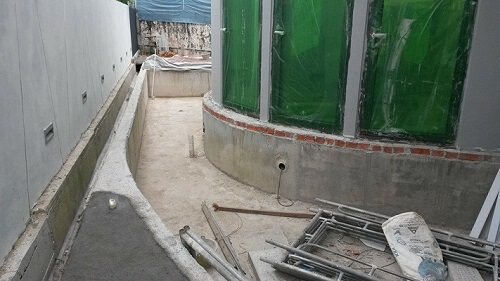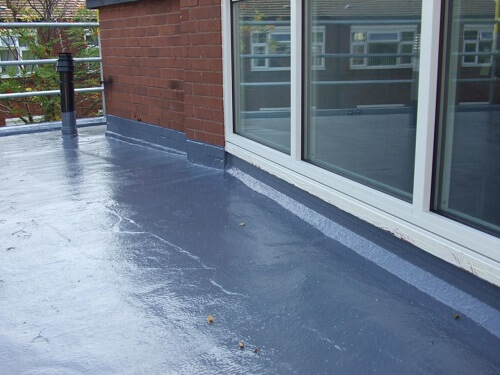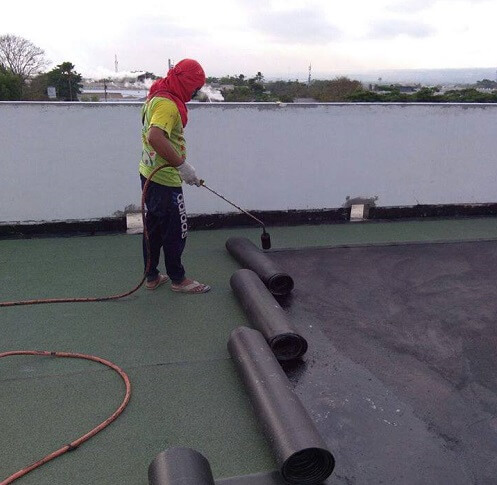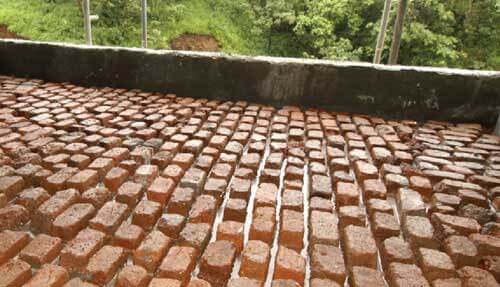Waterproofing is the utilization of a layer of thick material that keeps water from infiltrating. It makes the structure waterproof or water-safe with the goal that it remains unaffected by water or opposing the entrance of water. Water seepage is a widely known problem due to the lack of waterproof. It is the treatment of the surface to hinder the entry of liquid like water or groundwater from one side of a structure to the opposite side. We require waterproofing at the cellar of the structure, kitchen, lavatory, overhang regions, pool, water tank. It hollows the entire structure of the buildings, causes long haul issues by affecting the life of the general construction. To different waterproof parts, we use- Tapecrete, Nitobond, APP membrane, PU Resin, Epoxy, EPDM membrane, Pidicrete URP, Dr. Fixit 101 LW+, AcryFlex 2k sharp, Dr. Fixit Roofseal, etc.
There are different types and methods of waterproof based on the coating, location, and user's personal choice. The significant types of waterproofing which are widely used are-
- Cementitious waterproofing
- Liquid waterproofing membrane
- Bituminous coating
- Bituminous membrane
- Polyurethane liquid membrane
- Brick Bat Coba waterproofing
- EPDM waterproofing membrane
- Elastomeric paint waterproofing
- Injection grouting
Cementitious Waterproofing
Cementitious waterproofing is the least demanding technique for waterproofing construction. The materials for cementitious waterproofing is effectively accessible, and they're anything but difficult to blend and apply. It structures a thick, somewhat adaptable layer over the harmed structure against the section of water. This strategy is generally an unbending or semi-adaptable sort of waterproofing. Yet, since it is utilized in inner zones, for example, toilets, it isn't presented to daylight and enduring. Subsequently, cementitious waterproofing doesn't experience the agreement and development process. Cementitious frameworks don't require preparing a substrate before application. In any case, the wetting of the solid with water is fundamental. These types of structures are applied in two covers after the underlying preliminary work is finished. Tapecrete material is regularly utilized for waterproofing and simple to use. It is being used in- water treatment plants, sewage treatment plants, bridges, dams, tunnels, railway, river locks/channels, concrete dikes, subway systems, marine cargo ports and docks, parking structures, lots, etc. Before applying cementitious frameworks, substrates must be liberated from the soil, laitance, structure discharge specialists, and other outside material.

The main disadvantage of the cementitious waterproofing is that cementitious items have no provider for them most likely because the concrete doesn't stretch to any degree worth referencing. They will stand still in water immersion, yet will endure no joint or break development.
Liquid Waterproofing Membrane
Liquid membrane is a thin coating that generally comprises a groundwork coat and two layers of topcoats, which are applied by shower, roller, or trowel. It offers more adaptability than the cementitious kinds of waterproofing. The liquid fixes into a rubbery covering on the divider. These liquid-applied frameworks highlight coatings that have extension properties, solidness, adaptability, scraped area, concoction opposition giving effective establishment. The liquid waterproofing layer provides improved execution and above all life span. The lengthening properties of the coating can reach as high as 280%. The strength of the waterproofing coating relies upon what sort of polymer the producer utilized for the creation of the liquid waterproofing. The liquid waterproofing layer can be of a splash applied liquid membrane made out of polymer-altered black-top. The workers can cover a more prominent region in a day. Whenever asked, the following day can begin comprising the layer completed a day ago with shower liquid waterproofing coating. Along these lines, this strategy for waterproofing is an efficient procedure, and no compelling reason to close down different fills in as though applied toward the beginning of the day gets dry and stable till evening. It spares a ton of work cost and gives the most extreme quality outcomes

The membrane, therefore, shaped ought to be appropriate thickness as a more thin layer can separate, installer, and engineer in control must take care.
Bituminous coating
The bituminous coating is a covering utilized for waterproofing and an adaptable defensive coat as per its detailing and polymerization grade. Its adaptability and security against water can be affected by the polymer grade just as fortification of fiber. The bituminous coating is additionally called a black-top covering. The most widely recognized uses of bituminous coatings incorporate zones that are underneath screed wet. It is a fantastic defensive covering and waterproofing operator, particularly on surfaces, for example, substantial establishments. The bituminous coating is made of bitumen based materials, and it isn't reasonable for presentation to daylight. It turns out to be extremely weak and delicate when the long introduction to the day except if it is changed with a progressively flexible material, for example, polyurethane or acrylic-based polymers.

The adaptability of the completed items consistently relies upon the strong substance of the polymer added to the bitumen.
Bituminous membrane
Bituminous membrane waterproofing is a well-known strategy utilized for low-inclined rooftops because of their demonstrated exhibition. The bituminous waterproofing membrane has a light on the layer and self-cement film. The changed bitumen type is 3.0mm thickness, for example, SBS/APP fortified with fiberglass or polyester self-glue mixes include black-top, polymers, and filler; furthermore, certain saps and oils might be added to improve bond attributes. The self-glue type has a low timeframe of realistic usability as holding properties of the layer lessens with time.

Bituminous Membrane. Source: Fountech
Torchon membrane has uncovered and secured types. The uncovered layer regularly has granular mineral total to withstand the mileage of the enduring and different kinds of film, and the temporary worker needs to apply one defensive screed to forestall the cut of the film. Superb attachment to a wide range of surfaces (metal, concrete, and so on.,) and compound safe. It spares time, and splashes application permits consistent inclusion and durable waterproofing arrangement. It is fast relieving, even in a winter climate.
Elastomeric Paints
At present, an enormous number of prepared to utilize cold-applied elastic membrane forming mixes are accessible in the market for waterproofing. These mixes are unique, unlike customary paints, which are regularly applied in film thickness of 0.5 to 0.75 m utilizing a roller or brush. This thickness is multiple times thicker than conventional paints, which don't lose over a high-temperature range and time. These paints are of five kinds, and they are Acrylic-based, Polyurethane-based, Hypalon-based, Polyvinyl acetic acid derivation copolymer-based, Polymerized elastomeric bitumen, infiltrating oils, and different admixtures. Among all these, acrylic is the most well known and accessible. Alongside these paints, outstanding fiberglass mats are utilized as fortification that will improve the split connecting limit of these paints.
Polyurethane Liquid Membrane
Polyurethane liquid membrane strategy for waterproofing is utilized for the level rooftop region and presented to enduring. This waterproofing strategy is costly. Polyurethane Liquid Membrane can offer higher adaptability. Polyurethane is exceptionally touchy to dampness content present; hence before application, one must be exceptionally cautious assessing the dampness substance of the solid piece; in any case, stripping or de-holding of layers may occur after some time. Less utilized at the site.
Brick Bat Coba Waterproofing

Brick Bat Coba Waterproofing. Source: nbmcw.com
This waterproofing is laying of splashed brickbats (pieces) over new mortar, which goes about as a protection for warm solace. Surface block layer thickness in the middle of 70mm to 150 mm ( Avg. diameter of 110mm).
EPDM Waterproofing Membrane
It is an engineered elastic single layer adaptable film, solid in cold and blistering climate.
Injection Grouting
Injection grouting frameworks are utilized for point deserts in significant cases and uniquely favored in the event of negative waterproofing to be finished.

